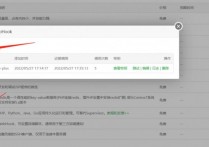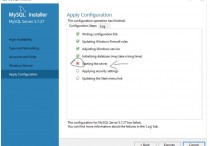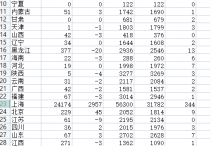地图函数在 Python 中有什么用?

在本文中,我们将学习 Map 函数在 Python 中的用法。
什么是 map() 函数?
Python 的 map() 函数将一个函数应用于迭代器中作为输入提供的每个项目。列表、元组、集合、字典或字符串都可以用作迭代器,它们都返回可迭代的映射对象。Map() 是一个内置的 Python 函数。
语法
map(function, iterator1,iterator2 ...iteratorN)
参数
函数 − 有必要提供一个映射,其中包含一个将应用于迭代器的所有可用项的函数。
迭代器 - 一个强制性的可迭代对象。它可以是列表、元组等。map() 函数接受多个迭代器对象作为参数。
返回值
map() 方法会将指定的函数应用于迭代器中的每个项目,并生成元组、列表或其他可迭代映射对象。
map() 函数如何工作?
函数和可迭代对象是 map() 函数的两个输入。传递给 map() 的函数是一个普通函数,它将遍历指定可迭代对象中的每个值。
将 map() 与数字列表一起使用
例
以下程序使用 Python 中的 map() 函数向列表中的每个元素添加 5 -
# creating a function that accepts the number as an argument def exampleMapFunction(num): # adding 5 to each number in a list and returning it return num+5 # input list inputList = [3, 5, 1, 6, 10] # Passing above defined exampleMapFunction function # and given list to the map() function # Here it adds 5 to every element of the given list modifiedList = map(exampleMapFunction, inputList) # printing the modifies list(map object) print(modifiedList) # converting the map object to the list and printing it print("Adding 5 to each element in a list using map():\n", list(modifiedList))输出
<map object at 0x7fb106076d10> Adding 5 to each element in a list using map(): [8, 10, 6, 11, 15]
将 map() 与字典一起使用
Python 使用字典来实现通常称为关联数组的内容。字典是键值对的集合。它是使用大括号 () 定义的。
字典是动态的和不断变化的。可以根据需要更改和删除它们。字典项可以使用键访问,但列表元素通过索引按其在列表中的位置进行检索,这就是字典与列表的不同之处。
由于字典是一个迭代器,你可以在 map() 函数中使用它。
例
以下程序使用 Python 中的 map() 函数向字典中的每个元素添加 5 −
# creating a function that accepts the number as an argument def exampleMapFunction(num): # adding 5 to each number in a dictionary and returning it return num + 5 # input Dictionary inputDictionary = {2, 3, 4, 5, 6, 7, 8, 9} # passing above defined exampleMapFunction function # and input dictionary to the map() function # Here it adds 5 to every element of the given dictionary modifiedDict = map(exampleMapFunction, inputDictionary) # printing the modified dictionary(map object) print(modifiedDict) # converting the map object to the list and printing it print("Adding 5 to each element in a dictionary using map():\n", list(modifiedDict))输出
<map object at 0x7fb1060838d0> Adding 5 to each element in a dictionary using map(): [7, 8, 9, 10, 11, 12, 13, 14]
将 map() 与元组一起使用
在 Python 中,元组是一个对象,其元素用逗号分隔并括在圆括号中。
例
以下代码使用 lower() 和 map() 函数将元组中的所有项转换为小写 −
# creating a function that accepts the number as an argument def exampleMapFunction(i): # converting each item in tuple into lower case return i.lower() # input tuple inputTuple = ('HELLO', 'TUTORIALSPOINT', 'pyTHON', 'CODES') # passing above defined exampleMapFunction function # and input tuple to the map() function # Here it converts every element of the tuple to lower case modifiedTuple = map(exampleMapFunction, inputTuple) # printing the modified tuple(map object) print(modifiedTuple) print('Converting each item in a tuple to lowercase:') # converting the map object to the list and printing it print(list(modifiedTuple))输出
<map object at 0x7fb10f773590> Converting each item in a tuple to lowercase: ['hello', 'tutorialspoint', 'python', 'codes']
在 Python 中使用 map() 和其他功能工具
使用 map() 以及 filter() 和 reduce() 等函数式工具,我们可以对可迭代对象执行更复杂的更改。
将 map() 与 filter() 一起使用
在某些情况下,我们必须处理一个可迭代的输入,并通过从输入中删除/过滤不必要的项目来返回另一个可迭代的输入。在这种情况下,Python 的 filter() 是一个明智的选择。
filter() 函数返回函数返回 true 的可迭代输入项。
如果未传递任何函数,则 filter() 使用标识函数。这表示 filter() 检查可迭代对象中的每个项目是否为其真值并删除所有假值。
例
以下函数过滤列表中的所有正数,并使用 filter() 和 map() 函数一起返回它们的平方根 -
# importing math module import math # creating a function that returns whether the number # passed is a positive number or not def isPositive(n): return n >= 0 # creating a function that filters all the positive numbers # from the list and returns the square root of them. def filterSqrtofPositive(nums): # filtering all the positive numbers from the list using filter() # and returning the square root of them using the math.sqrt and map() filteredItems = map(math.sqrt, filter(isPositive, nums)) # returning the list of filetred elements return list(filteredItems) # input list inputList= [16, -10, 625, 25, -50, -25] # calling the function by passing the input list print(filterSqrtofPositive(inputList))
输出
[4.0, 25.0, 5.0]
结论
Python 的 map() 函数允许您对可迭代对象执行操作。Map() 通常用于转换和处理可迭代对象,而无需循环。
在本文中,我们通过使用几种数据类型作为示例,学习了如何在 Python 中使用 map() 方法。
本站发布的内容若侵犯到您的权益,请邮件联系站长删除,我们将及时处理!
从您进入本站开始,已表示您已同意接受本站【免责声明】中的一切条款!
本站大部分下载资源收集于网络,不保证其完整性以及安全性,请下载后自行研究。
本站资源仅供学习和交流使用,版权归原作者所有,请勿商业运营、违法使用和传播!请在下载后24小时之内自觉删除。
若作商业用途,请购买正版,由于未及时购买和付费发生的侵权行为,使用者自行承担,概与本站无关。












